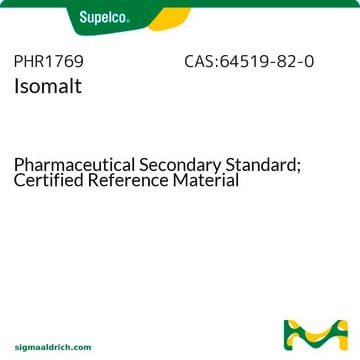613304
Chloroform solution
NMR reference standard, 2% in chloroform-d (99.8 atom % D), NMR tube size 3 mm × 8 in.
About This Item
Produtos recomendados
grau
NMR reference standard
analytical standard
Nível de qualidade
concentração
2% in chloroform-d (99.8 atom % D)
técnica(s)
NMR: suitable
tamanho do tubo de RMN
3 mm × 8 in.
aplicação(ões)
environmental
Formato
single component solution
cadeia de caracteres SMILES
ClC(Cl)Cl
InChI
1S/CHCl3/c2-1(3)4/h1H
chave InChI
HEDRZPFGACZZDS-UHFFFAOYSA-N
Procurando produtos similares? Visita Guia de comparação de produtos
Características e benefícios
Quantidade
Palavra indicadora
Danger
Frases de perigo
Declarações de precaução
Classificações de perigo
Acute Tox. 3 Inhalation - Acute Tox. 4 Oral - Carc. 2 - Eye Irrit. 2 - Repr. 2 - Skin Irrit. 2 - STOT RE 1 Oral - STOT SE 3
Órgãos-alvo
Central nervous system, Liver,Kidney
Código de classe de armazenamento
6.1D - Non-combustible acute toxic Cat.3 / toxic hazardous materials or hazardous materials causing chronic effects
Classe de risco de água (WGK)
WGK 3
Ponto de fulgor (°F)
Not applicable
Ponto de fulgor (°C)
Not applicable
Equipamento de proteção individual
Eyeshields, Faceshields, Gloves
Escolha uma das versões mais recentes:
Certificados de análise (COA)
Lamentamos, não temos COA para este produto disponíveis online no momento.
Se precisar de ajuda, entre em contato Atendimento ao cliente
Já possui este produto?
Encontre a documentação dos produtos que você adquiriu recentemente na biblioteca de documentos.
Active Filters
Nossa equipe de cientistas tem experiência em todas as áreas de pesquisa, incluindo Life Sciences, ciência de materiais, síntese química, cromatografia, química analítica e muitas outras.
Entre em contato com a assistência técnica







